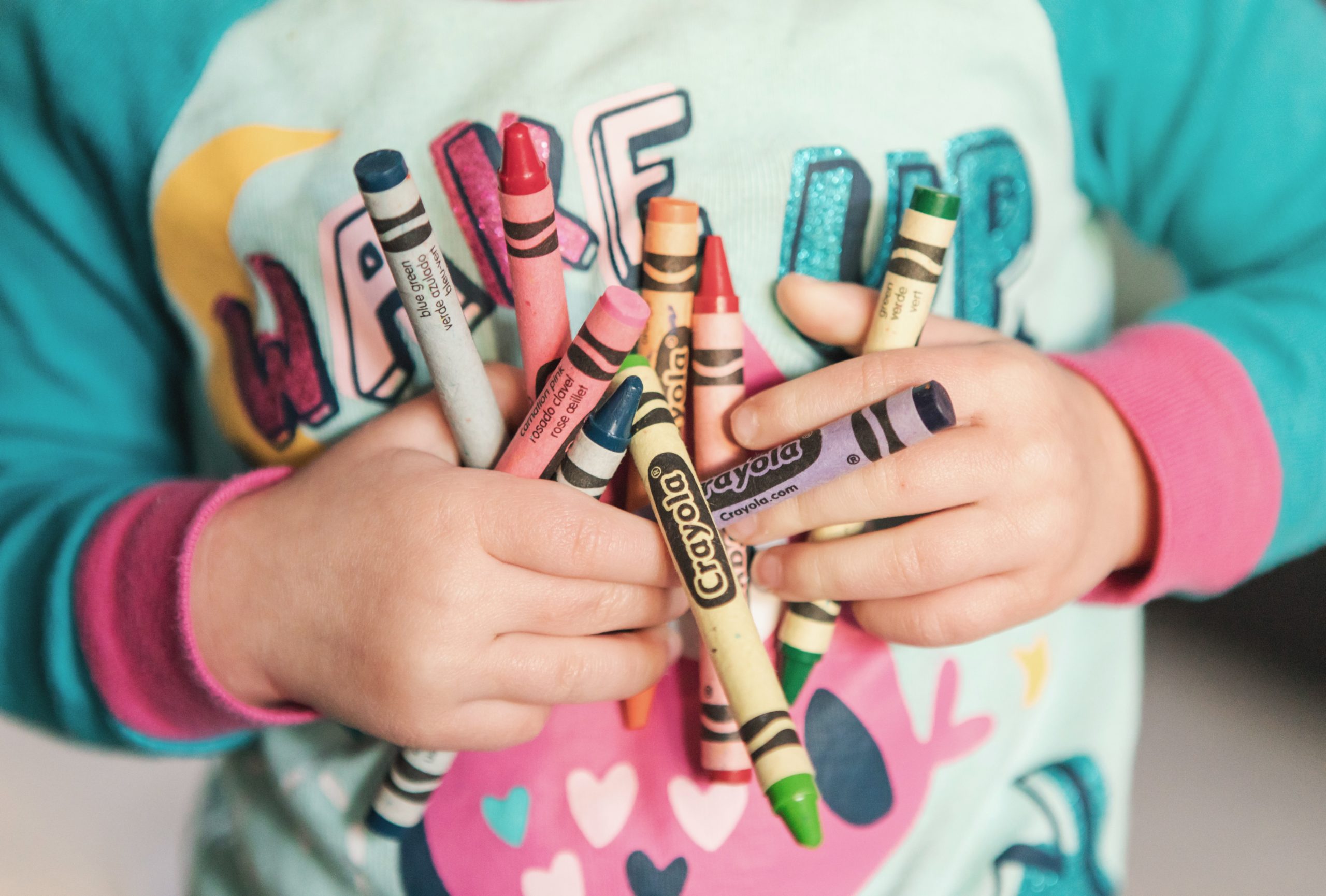As a Speech & Language Pathologist, sometimes therapy is every bit as much about modifying negative behaviors as it is about the actual therapy.
As a parent, I am the first one to raise my hand and say that some days it is ALL about redirecting negative behaviors. (I’m pretty sure I’m not alone in this!)
And you know what? That’s okay.
Notice that I’m using words like “modifying” and “redirecting” instead of “squashing” and “eradicating.” Yes, while there are several behaviors I’d LOVE to expel altogether, this post is about the ones that we just can’t seem to conquer right now. It’s about giving the child a healthy manner in which to express the negative behavior.
If an entire speech session HAS to be spent on managing behaviors, it might not be ideal, but it is okay because the child is still learning. He is learning how to control and express his emotions in an appropriate manner. He is learning coping strategies that he can practice in different environments. He is learning about social rules and boundaries. These are all necessary life skills. It isn’t possible to teach a child more about speech and language until negative behaviors have been addressed.
When is it a negative behavior?
There are many behaviors that kids display on a daily basis. Some of them are laudable, such as completing a chore independently. Others are downright silly, like when my boys make ridiculous noises at each other and then burst out into laughter simultaneously. Sometimes negative behaviors are easily identified (e.g., pushing, hitting, taking toys away), but other times they might be hard to pin down.
Something to ask yourself is: Does this behavior negatively impact my child’s ability to ______? Then, fill-in-the-blank. Example words include learn, socialize, play, enjoy life, reach his/her true potential. Sometimes a negative behavior becomes a crutch for a child and does not seem negative at first.
Several years ago, I worked with an older school-aged client, KJ, who had a diagnosis of being on the autism spectrum as well as ADHD. KJ was sweet and quirky and never failed to make me laugh during our sessions together.
It became clear to me quite quickly that he had myriad thoughts racing through his mind that he was having a difficult time keeping them under control. This became apparent when he started to laugh one day for no particular reason.
I said, “Why are you laughing?”
KJ replied, “Because I am getting out my binder and my binder zips and zipper starts with the letter ‘z’ and my sister’s name starts with the letter ‘z’ and we were watching ‘Sponge Bob’ last night and there was a funny part in the show. I am laughing at Sponge Bob!”
Needless to say I was completely shocked by the connections that KJ made to arrive at a funny scene in a “Sponge Bob” episode. My client calmed down and stopped laughing so that we could resume our session together. However, over the coming weeks, teachers started reporting that KJ would burst into uncontrollable fits of giggles during class and that KJ couldn’t calm down. It was disruptive not only to my client’s learning but my client’s classmates’ learning as well.
The behavior that seemed silly to me at first morphed into a negative behavior that needed redirection.
Once it became a negative behavior, we worked on strategies in therapy to help get my client’s behavior under control. We created a list of things KJ could do to calm down independently. Some items were typical (e.g., taking deep breaths and counting) while others were personal to KJ (e.g., tapping the upper lip with an index finger, or picturing a naked tree, which was calming because it didn’t look like a Christmas tree so it made KJ feel a bit sad.)
I know that the example with an older kid, but all that is to say – keep your eyes out for those insidious negative behaviors! Read on for tips regarding reshaping behaviors in little one’s.
Let’s Water the Sponge!
As with most of my posts, there is not a singular way to address and fix this issue. However, I am here for you to help you out and guide you! I’m going to give you a few tips of things I do at home with my older toddler to help redirect his negative behaviors.
- Give your child tools to communicate. This is a big one. Try to figure out where the breakdown is occurring and give him the words he needs to use. For example, if you notice your child is trying to open up a toy and can’t do it, then throws the toy at you, give him the word “help” or “open”. A simple nudge in the right direction will guide him on a healthy path to communicate.
- Tell your child what he CAN do. All-day long, children are told what they can’t or shouldn’t do. Try redirecting your child and letting him know what he can do when he feels a certain way.
If your little one is hitting or kicking, let him know that he can hit or kick balls.
If your little one is spitting, tell him that he can spit in the sink.
If he is talking about peeing and pooping while you’re eating a meal, encourage him to only talk about it in the bathroom.
If your little one wants to scream, give him a special “screaming spot” (ours is in the garage, haha.)
Once your child knows what he is allowed to do, he will start to tell you, “Mommy, I need to scream in the garage.” Or, “I have to go spit in the sink now.” Don’t kid yourself, redirection doesn’t happen independently with 100% success in our household as our older one is still navigating the “terrible two’s”, BUT, he knows the rules, boundaries, and what is acceptable vs. unacceptable behavior. - Use a visual schedule. Sometimes children have a challenging time with transitions. If you are able to prepare your child for what is to come next and show when an activity is complete, that might help temper and curb any negative behaviors that would be expressed.
You can print out simple images and use velcro to put them on a laminated sheet of paper to create a visual board for your child. Simply swap out images when your schedule changes and remove pictures as you complete tasks. - Create a routine. Children thrive off of routines. Research shows that routines are healthy for a child’s development not only in regards to physical growth but mental growth as well.
Try to make sure that your child wakes and goes to bed at similar times and naps at similar times each day. The same goes for meals and snacks throughout the day. - Don’t be afraid to laugh. The reason I picked this image for my post is because of a time my little sister engaged in a rebellious behavior as a toddler. My parents went into her room one day and she was coloring on her walls. When my parents asked her to stop, she replied, “This is my room and these are my walls. I can color if I want.” She turned around and continued coloring! My parents were stunned and toed the line between laughing out loud and redirecting her behavior.
Thanks for stopping by and reading this post! Feel free to get creative with redirecting negative behaviors and do what works for your child. Take deep breaths and one step at a time. As always, you’re welcome to drop a comment below! Cheers.


